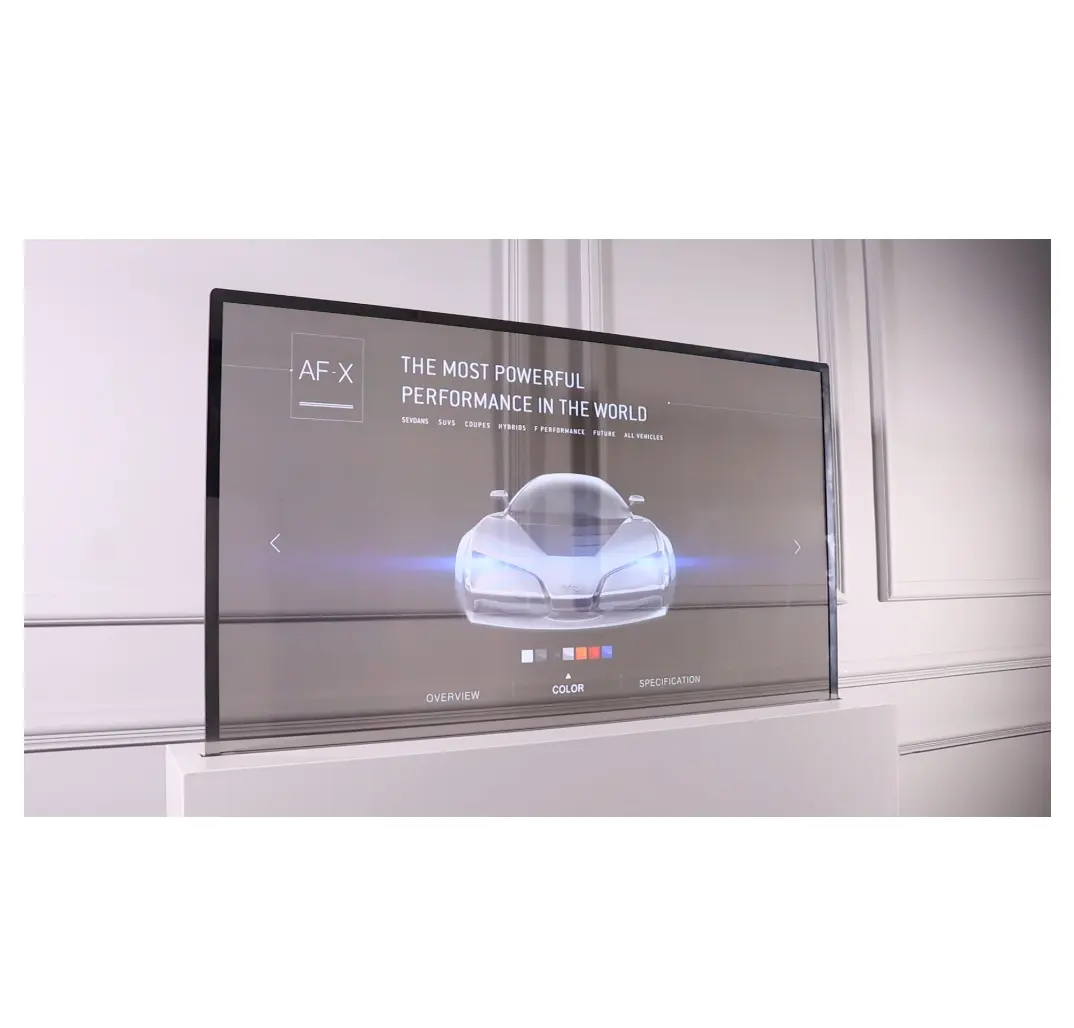The Evolution of Display Technology: Embracing Transparency
The world of visual communication is undergoing a revolutionary transformation with the emergence of transparent OLED displays. These cutting-edge screens represent a remarkable leap forward in display technology, seamlessly blending digital content with the physical environment in ways previously confined to science fiction. As these innovative displays become more prevalent in our daily lives, they're reshaping how we interact with information and our surroundings.
The journey from traditional LCD screens to transparent OLED displays marks a significant milestone in technological advancement. Unlike conventional displays that require backlight and appear opaque, transparent OLED displays can maintain clarity while delivering vivid imagery, opening up unprecedented possibilities for both commercial and consumer applications.
Understanding the Technology Behind Transparent Displays
Core Components and Operating Principles
Transparent OLED displays function through a sophisticated arrangement of organic light-emitting diodes that can be rendered transparent when inactive. The technology relies on transparent thin-film transistors (TFTs) and specialized organic compounds that emit light when electricity passes through them. This unique construction allows for exceptional transparency when the display is off and vibrant, high-contrast images when activated.
The key innovation lies in the elimination of the traditional backlight unit found in LCD displays. Instead, transparent OLED displays utilize self-illuminating pixels, enabling them to achieve true transparency while maintaining excellent picture quality. This fundamental difference in design architecture is what sets them apart from other display technologies.
Manufacturing Challenges and Solutions
Creating transparent OLED displays presents unique manufacturing challenges that require innovative solutions. The production process demands precise control over material deposition and careful management of transparency levels. Manufacturers must balance the need for clarity with the requirements for electrical conductivity and structural integrity.
Recent advances in production techniques have led to significant improvements in both durability and transparency levels. Modern fabrication methods now achieve transparency rates of up to 40% while maintaining full color capabilities and high resolution, marking a substantial improvement over early prototypes.

Applications Across Industries
Retail and Commercial Spaces
The retail sector has emerged as a primary adopter of transparent OLED displays, using them to create engaging storefront experiences and interactive product showcases. These displays enable retailers to overlay digital information onto physical products, creating an immersive shopping experience that bridges the gap between digital and physical retail environments.
Luxury brands particularly benefit from this technology, using transparent OLED displays to enhance product presentations while maintaining the visibility of actual merchandise. This dual-layer approach to visual merchandising has proven highly effective in capturing customer attention and driving engagement.
Automotive Integration
The automotive industry is incorporating transparent OLED displays into vehicle design, revolutionizing both functionality and aesthetics. These displays can be integrated into windshields and windows, providing heads-up displays (HUDs) that show navigation, speed, and safety information without obstructing the driver's view of the road.
Future applications may include enhanced safety features, such as highlighting potential hazards in real-time or displaying augmented reality navigation cues directly in the driver's line of sight. This integration of transparent display technology with automotive safety systems represents a significant step forward in vehicle interface design.
Design Considerations and Implementation
Content Optimization Strategies
Creating content for transparent OLED displays requires a specialized approach that considers both the transparent nature of the medium and the viewing environment. Designers must carefully balance contrast, color selection, and content placement to ensure optimal visibility in various lighting conditions.
The unique properties of transparent OLED displays demand thoughtful consideration of background environments and viewing angles. Content creators must develop strategies that maintain legibility while taking advantage of the display's transparency features, often incorporating ambient conditions into their design decisions.
Installation and Environmental Factors
Successful implementation of transparent OLED displays requires careful consideration of environmental factors such as ambient lighting, viewing angles, and physical placement. Installation professionals must account for these variables while ensuring proper protection from environmental elements that could affect display performance.
Temperature control and protection from direct sunlight are crucial considerations, as these factors can impact both the longevity and performance of transparent OLED displays. Proper installation includes implementing appropriate protective measures while maintaining optimal viewing conditions.
Future Prospects and Innovations
Emerging Technologies and Improvements
The future of transparent OLED displays holds promising developments in several key areas. Researchers are working on enhancing transparency levels while maintaining color accuracy and brightness. New materials and manufacturing techniques are being developed to increase durability and reduce production costs.
Advancements in flexible transparent OLED technology may soon enable curved and bendable transparent displays, opening up even more possibilities for creative applications. These innovations could lead to more versatile and adaptable display solutions across various industries.
Market Growth and Adoption Trends
The market for transparent OLED displays continues to expand as technology improves and costs decrease. Industry analysts project significant growth in adoption across multiple sectors, particularly in retail, automotive, and architectural applications. This growth is driven by increasing demand for innovative display solutions that can seamlessly integrate with existing environments.
As production capabilities improve and economies of scale come into play, the technology is expected to become more accessible to a broader range of businesses and applications. This democratization of transparent display technology could lead to widespread adoption in both commercial and consumer markets.
Frequently Asked Questions
What makes transparent OLED displays different from traditional displays?
Transparent OLED displays utilize self-illuminating pixels without the need for a backlight, allowing them to maintain transparency when inactive while providing vibrant images when in use. This fundamental difference in design enables true transparency while maintaining high image quality and contrast.
How durable are transparent OLED displays?
Modern transparent OLED displays are engineered for durability, with protective layers and robust construction methods. However, they require proper installation and maintenance to ensure longevity, including protection from extreme temperatures and direct sunlight exposure.
Can transparent OLED displays be used outdoors?
While transparent OLED displays can be used outdoors, they require appropriate environmental protection and careful consideration of ambient lighting conditions. Special enclosures and temperature control measures may be necessary to ensure optimal performance in outdoor settings.

